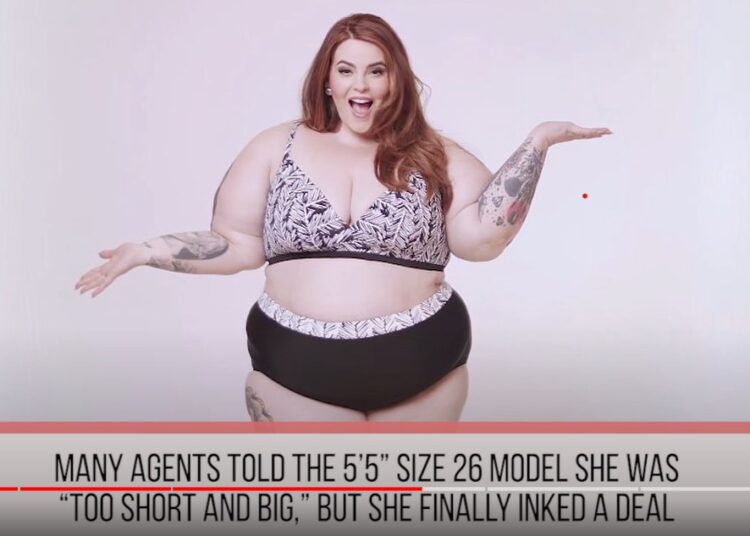Victoria’s Secret now aims to redefine its brand and image. No longer interested in “angels and fantasies,” it now delivers a dose of real life by showcasing models that are “curvy” with their new campaign titled, “Undefinable”. The brand had announced that it would be getting rid of outdated angel imagery and body ideals in June 2021.
Let’s not mince words, if a man or woman is 30% over what is considered by the medical profession a “healthy weight” then that’s called obesity, not curviness, no matter how you try to spin your pitch. According to the WHO, globally over 4 million people die each year as a result of being overweight or obese. And please don’t tell me you “have big bones” or are “all muscle”. To be clear, I’m not talking about carrying those extra 5 or 10 pounds.

Equally, if you’re 30% below what is considered a healthy weight then it’s emaciation (interestingly, there is no true antonym for obesity.) Both are equally unhealthy. Like most things in life, moderation is the wisest course to take.
Bella Hadid, famous “Victoria’s Secret Angel” noted, “I was taught that sexy was about your body, the way that your boobs looked in a push up bra”. But the latest campaign aims to change that view.

Launched on Monday, it’s meant to “cement our brand positioning and our commitment to our revolution and transformation,” Raúl Martinez, EVP, head creative director at Victoria’s Secret, said in a statement provided to Yahoo Life. “This particular campaign goes beyond one season…We are not here to dictate how to define beauty for anyone but instead we are here to celebrate how they define beauty on their own terms.”
Who wouldn’t agree with such rhetoric? Of course, we want to define ourselves. Of course, a brand should be fully committed to represent a range of body types and sizes.
But this push to normalize obesity by showcasing models and celebrities, while knowing all the medical problems that it leads to, is merely a cynical strategy to cater to the reality that obesity in America is rampant—which incidentally, is spreading all over the globe as well– and if you want to make a profit—whether that be in media or merchandising, you have to embrace your obese customers and make them think it’s just as good as being a “Victoria’s Angel”.

Victoria’s Secret is in the business of making a profit—as is the celebrity industry. Individuals should take control of their own health, not look to media for pretexts to either gorge or starve themselves. It’s wonderful that finally we can see models and celebrities that actually look like us and our next-door neighbors, but just as we shouldn’t look like Bella Hadid who at nearly 5’10” weighs 120 pounds, we should not aspire to being Ashley Graham either who at the same height weighs in at 200 pounds. Models outside of the Victoria’s Secret orbit are even bigger now and are promoted as being “body positive.” Tess Holliday at 5’5” weighs 280 pounds. At that height her healthy weight is around 125 pounds. She is well more than double that weight and is being showcased as “curvy” or plus size.
To glamorize obesity today—whether you call it body positivity or curviness–as so many brands are doing, is just as bad as when heroin chic emaciation was the craze and Kate Moss was its poster girl. To promote both extremes is to be complicit in endangering the health of millions of people.
It’s interesting that many models and celebrities who proudly flaunted being “curvy” at one time later tell us how happy they are and how much better they feel about themselves once they finally succeed in losing weight. Rebel Wilson and Adele come to mind. Adele lost 100 pounds and Rebel lost 80. Let’s take our cues not from the media that panders to our weaknesses, but from the medical profession.











